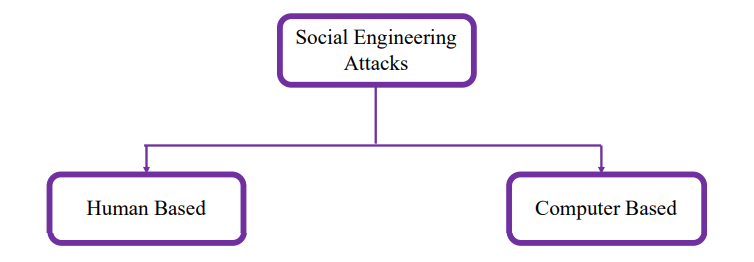Cyber Crime Detection and Prevention Techniques on Cyber Cased Objects Using SVM and Smote
Main Article Content
Abstract
Conventional cybersecurity employs crime prevention mechanisms over distributed networks. This demands crime event management at the network level where Detection and Prevention of cybercrimes is a must. A new Framework IDSEM has been introduced in this paper to handle the contemporary heterogeneous objects in cloud environment. This may aid for deployment of analytical tools over the network. A supervised machine learning algorithm like SVM has been implemented to support IDSEM. A machine learning technique Like SMOTE has been implemented to handle imbalanced classification of the sample data. This approach addresses imbalanced datasets by oversampling the minority classes. This will help to solve Social Engineering Attacks (SEA) like Phishing and Vishing. Classification mechanisms like decision trees and probability functions are used in this context. The IDSEM framework could minimize traffic across the cloud network and detect cybercrimes maximally. When results were compared with existing approaches, the results were found to be good, leading to the development of a unique SMOTE algorithm.
Article Details
References
Libicki, M. Could the issue of DPRK hacking benefit from benign neglect? Georg. J. Int. Aff. 2018, 19, 83–89.
Atwell, C.; Blasi, T.; Hayajneh, T. Reverse TCP and social engineering attacks in the era of big data. In Proceedings of the IEEE International Conference of Intelligent Data and Security, New York, NY, USA, 9–10 April 2016; pp. 1–6. [CrossRef].
Mahmood, U.; Afzal, T. Security analytics: Big Data analytics for cybersecurity: A review of trends, techniques and tools. In Proceedings of the IEEE National Conference on Information Assurance, Rawalpindi, Pakistan, 11–12 December 2013; pp. 129–134. [CrossRef].
Mouton, F.; Leenen, L.; Venter, H. Social engineering attack examples, templates and scenarios. Computer Security 2016, 59, 186–209.
Segovia, L.; Torres, F.; Rosillo, M.; Tapia, E.; Albarado, F.; Saltos, D. Social engineering as an attack vector for ransomware. In Proceedings of the Conference on Electrical Engineering and Information Communication Technology, Pucon, Chile, 18–20 October 2017; pp. 1–6
Carlos Silva, David Cohen, Takashi Yamamoto, Maria Petrova, Ana Costa. Ethical Considerations in Machine Learning Applications for Education. Kuwait Journal of Machine Learning, 2(2). Retrieved from http://kuwaitjournals.com/index.php/kjml/article/view/192
Xiangyu, L.; Qiuyang, L.; Chandel, S. Social engineering and Insider threats. In Proceedings of the International Conference on Cyber-Enabled Distributed Computing and Knowledge Discovery, Nanjing, China, 12–14 October 2017; pp. 25–34
Patil, P.; Devale, P. A literature survey of phishing attack technique. Int. J. Adv. Res. Comput. Commun. Eng. 2016, 5, 198–200.
Kalnin, s, R.; Purin, s, J.; Alksnis, G. Security evaluation of wireless network access points. Appl. Comput. Syst. 2017, 21, 38–45.
Deylami, Hanif-Mohaddes, and Yashwant Prasad Singh. "Adaboost and SVM based cybercrime detection and prevention model." Artif. Intell. Res. 1.2 (2012): 117-130.
Singh, Shailendra, et al. "Improved Support Vector Machine for Cyber Attack Detection." Proceedings of the World Congress on Engineering and Computer Science. Vol. 1. 2011.
Veena, K., et al. "SVM Classification and KNN Techniques for Cyber Crime Detection." Wireless Communications and Mobile Computing 2022 (2022).
Eliyas, S. ., & Ranjana, P. . (2023). Exploring the Critical Challenges and Potent Effects of E-Learning. International Journal of Intelligent Systems and Applications in Engineering, 11(3s), 189–193. Retrieved from https://ijisae.org/index.php/IJISAE/article/view/2560
Mohammad, Rami Mustafa A. "An enhanced multiclass support vector machine model and its application to classifying file systems affected by a digital crime." Journal of King Saud University-Computer and Information Sciences (2019).
Pandey, Shalini, and Sudhakar Pandey. "Machine Learning Techniques for Cybercrime Detection: A Survey." 2021. Available at: DOI: 10.1145/3453477.
Ali, Abeer, Jitender Kumar Chhabra, and Arun Solanki. "A Hybrid Approach for Cybercrime Detection and Prevention in Social Networks." 2021. Available at: DOI: 10.1007/s11227-021-04030-2.
Kumar, Suman, and Ashish Khanna. "A Novel Approach for Detecting Cyber Attacks Using Machine Learning Techniques." 2020. Available at: DOI: 10.1016/j.future.2020.05.003.
Sharma, Deepti, and Vijay Laxmi. "Enhancing Cyber Crime Detection and Prevention Mechanism Using Machine Learning Techniques." 2019. Available at: DOI: 10.1016/j.future.2019.03.026.

